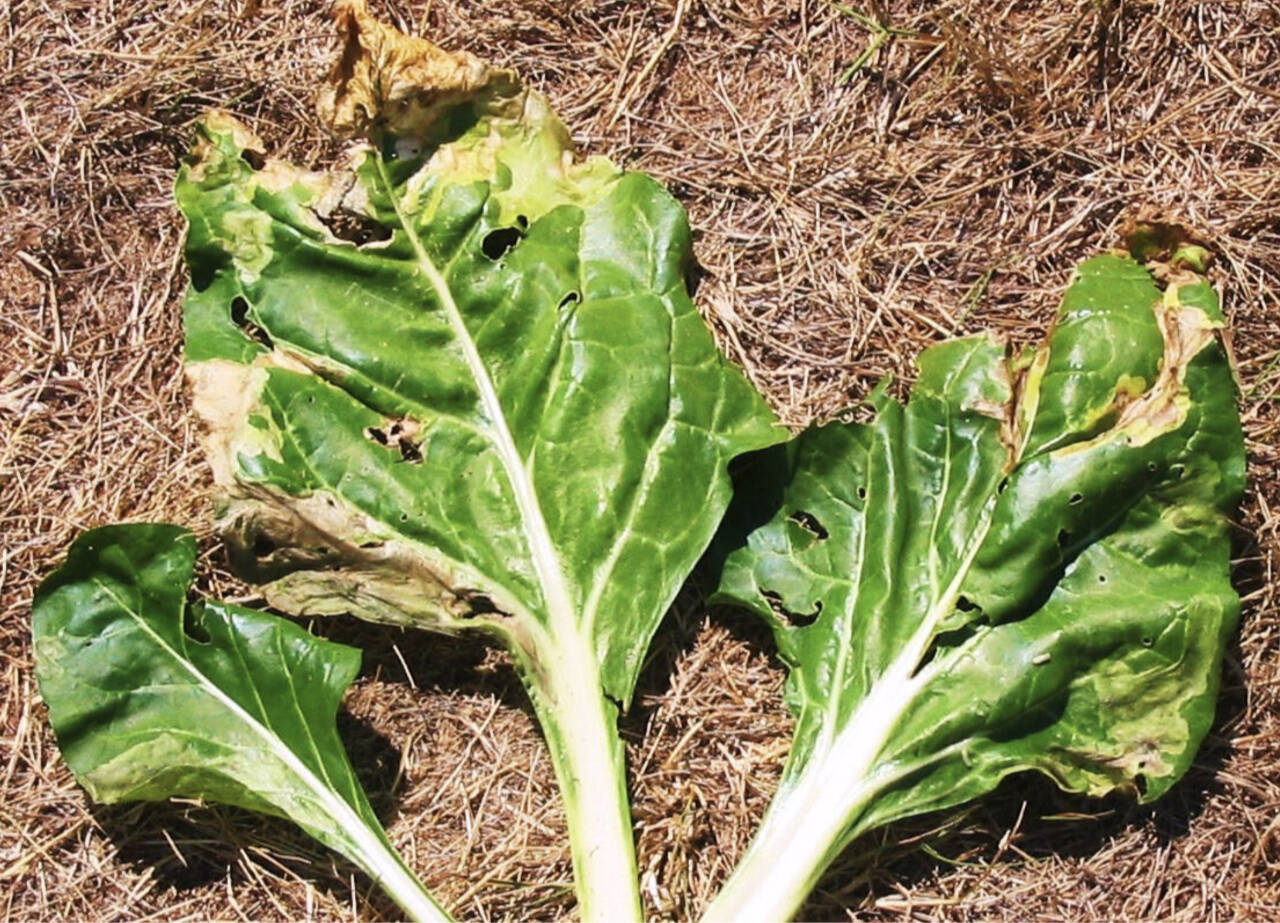Leaf miners are one of the most common insect problems in Pacific Northwest gardens. They affect a large number of vegetable crops such as spinach and bush beans as well as ornamental plants and weeds. Although a common plant problem, leaf miners are fairly host-specific and result from the larvae of a variety of flies, moths, and beetles.
The spinach (or beet) leaf miner is the larval stage of a small gray insignificant fly about ¼ inch long with prominent black hairs. The fly lays eggs, usually on the underside of leaves of susceptible plants including spinach, beets and chard and broad-leafed weeds such as lamb’s quarters.
After hatching, the larva burrows between the upper and lower surfaces of the leaf to produce tunnels or “mines.” Later, these tunnels enlarge, forming gray/white blotches and streaks on the leaf surface and distorting the leaf shape.
The leaves usually develop yellow/brown areas of dead tissue as the infection progresses. When fully mature, the larva is white and about ¼ inch long.
The life cycle is completed when the mature larva burrows through the leaf, falls to the ground where it pupates and emerges from the soil as a fully mature fly. In favorable years, leaf miners can go through multiple generations.
Last spring leaf miners were a serious problem from the Fraser Valley in British Columbia all the way to southern Oregon. Heavy infestations occurred in the Olympic Peninsula in late April through June with a second generation appearing in mid-August through late September.
Leaf miner control methods are numerous and varied. Good weed control is critical and will eliminate hosts for this pest. Weeds such as pigweed, lamb’s quarters, plantain, chickweed and nightshade should be destroyed and discarded.
For garden plants, infected leaves can be picked off and disposed of in the garbage; they should not be composted. You can squeeze the leaf to kill the larva before disposing of it. If you are diligent with this effort, you can wipe out the next generation or at least limit its size.
The most important control method is crop rotation. Because leaf miner larvae overwinter in the soil, do not plant susceptible crops in areas where leaf miners were found last year.
Screening plants before flies emerge in April through May will minimize the fly’s access to susceptible plants (and can provide protection from the cold). Put down floating or fixed row covers, such as Reemay, Agribond or the equivalent in early April.
If there is a warm early spring, you may need to push this forward to late March. Do not cover areas where leaf miners have been found in the past.
It’s disappointing to find brown spots on your prized spinach and chard leaves. Watch out for this pest; if you see it, immediately take steps to prevent future crops from being affected.
Bob Cain is a WSU-Certified Clallam County Master Gardener.



